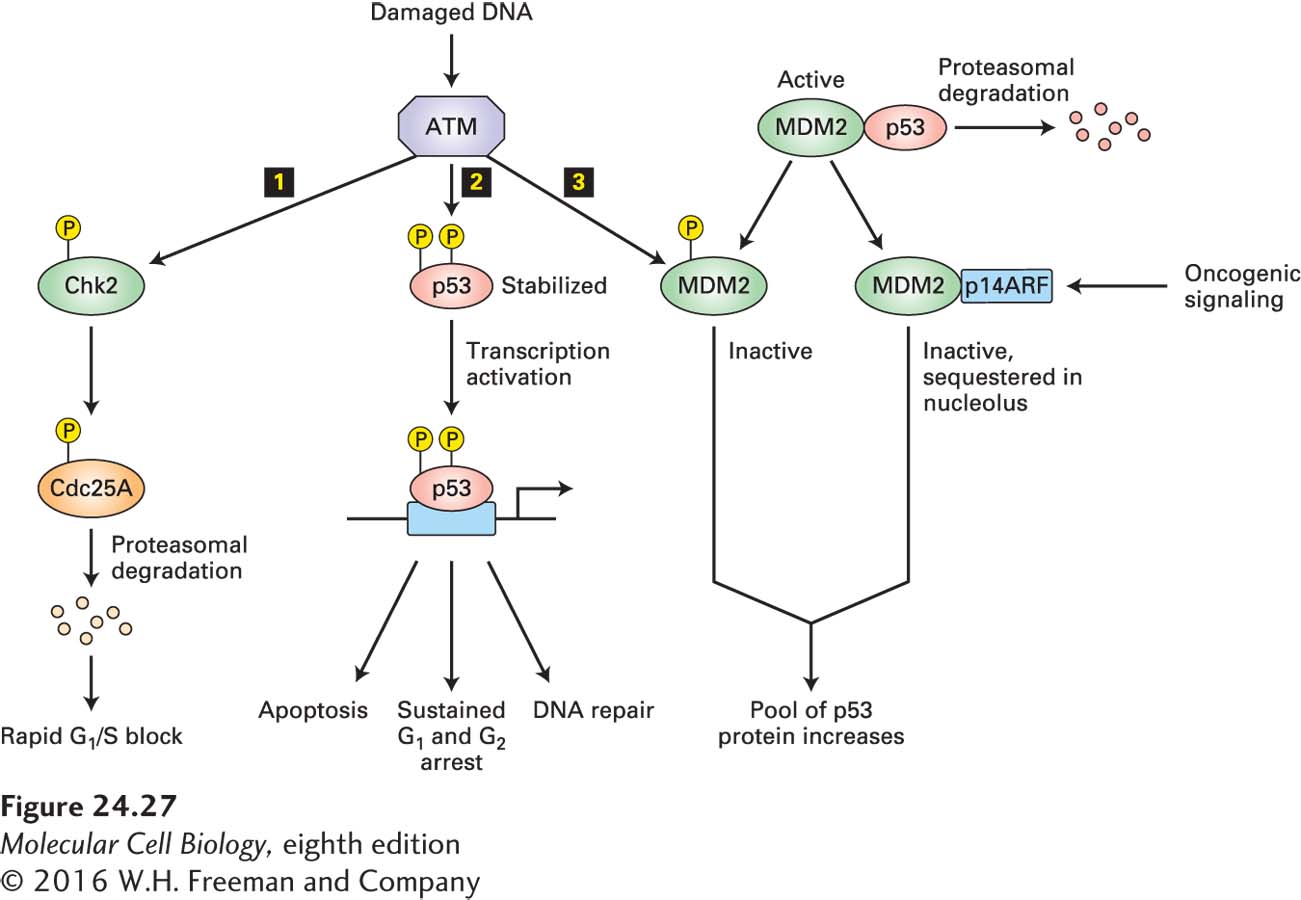
FIGURE 24- 27 Arrest in G1 in response to DNA damage. The kinase activity of ATM is activated in response to DNA damage due to various stresses (e.g., UV irradiation, heat). Activated ATM then triggers three pathways leading to arrest in G1: 1 Chk2 is phosphorylated and, in turn, phosphorylates Cdc25A, thereby marking it for degradation and blocking its role in CDK2 activation. 2 In a second pathway, phosphorylation of p53 stabilizes it, permitting p53- activated expression of genes encoding proteins that cause arrest in G1, promote apoptosis, or participate in DNA repair. 3 The third pathway is another way of controlling the pool of p53. The MDM2 protein in its active form can form a complex with p53, inhibiting the transcription factor and causing p53 ubiquitinylation and subsequent proteasomal degradation. ATM phosphorylates MDM2 to inactivate it, causing increased stabilization of p53. In addition, MDM2 levels are controlled by p14ARF (p19ARF in the mouse), which binds MDM2 and sequesters it in the nucleolus, where it cannot access p53. The p14ARF gene is induced by high levels of mitogenic signaling, which are frequently observed in cells carrying oncogenic mutations in growth factor signaling pathways. The human MDM2 gene is frequently amplified in sarcomas, which presumably causes excessive inactivation of p53. Similarly, p14ARF is also found mutated in some cancers.
[Leave] [Close]